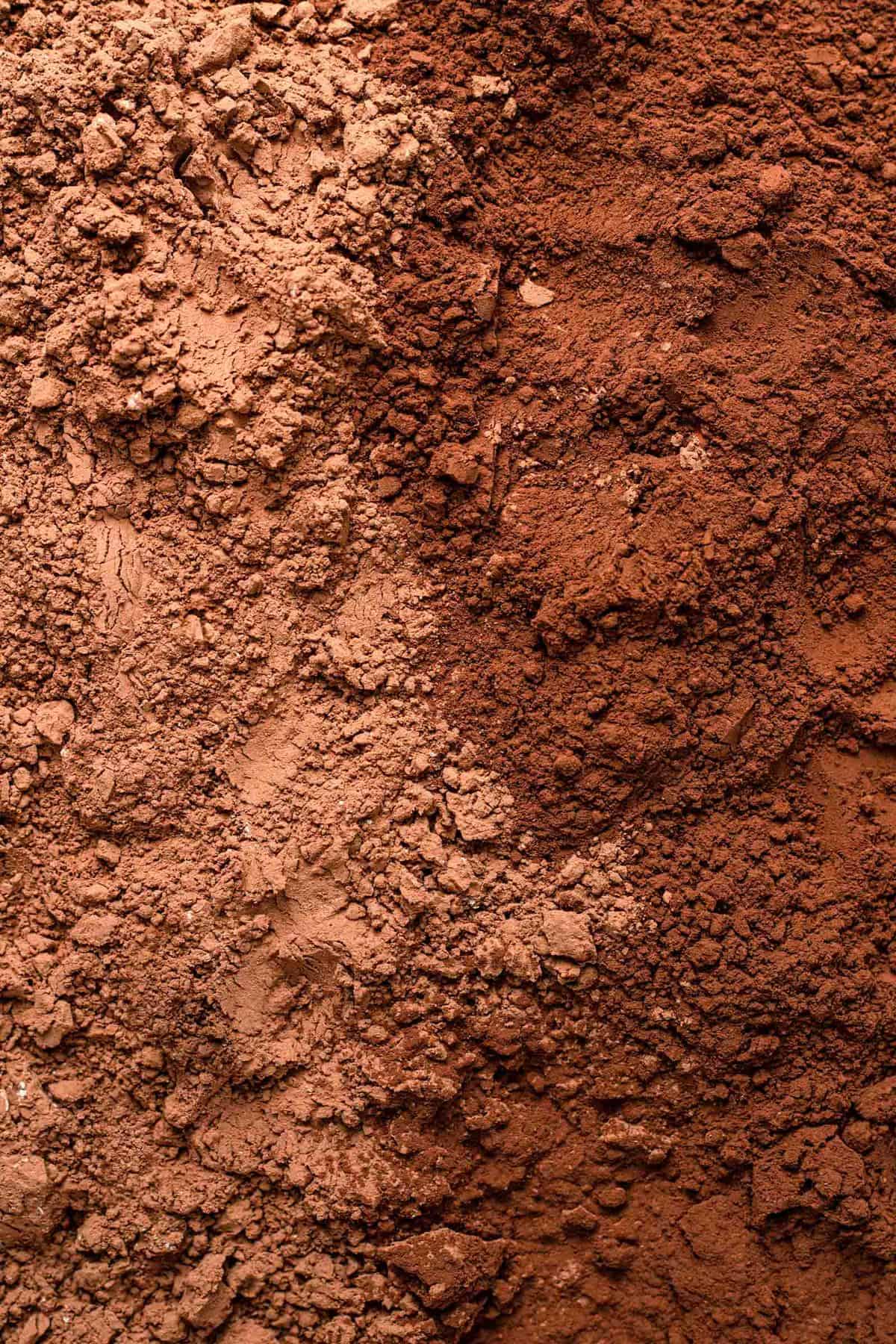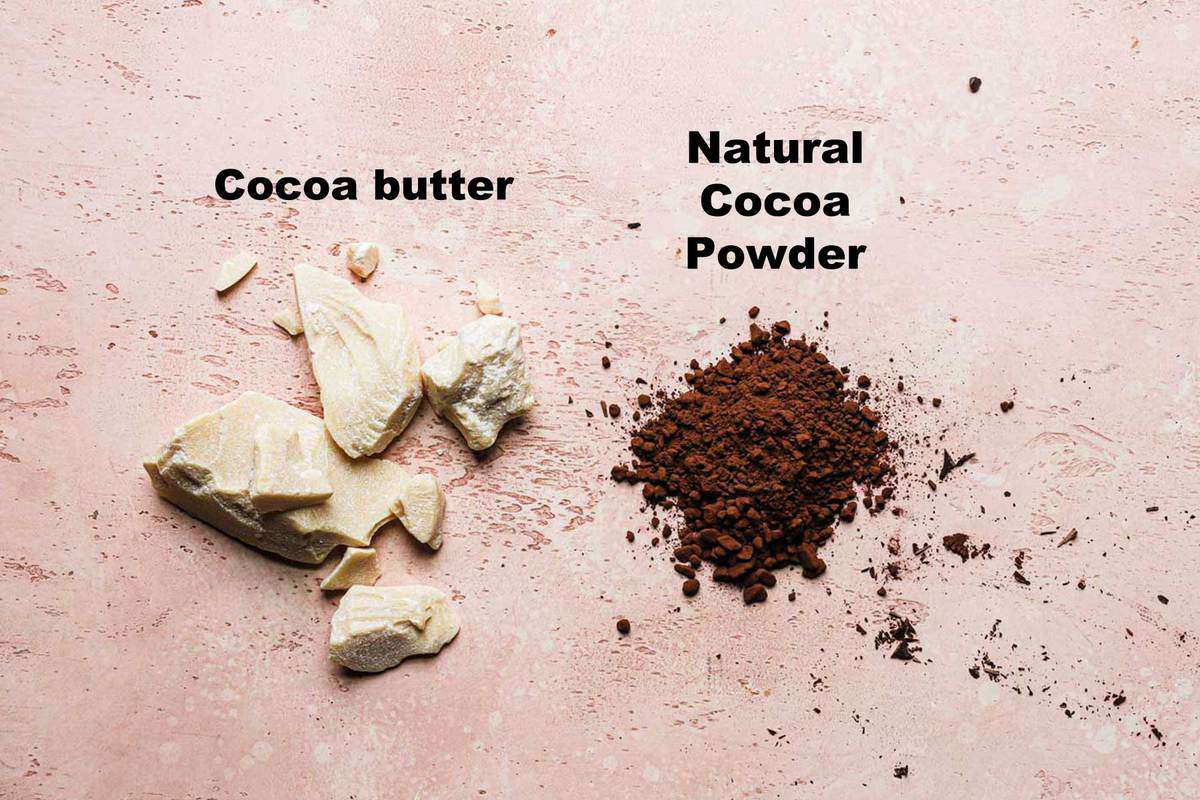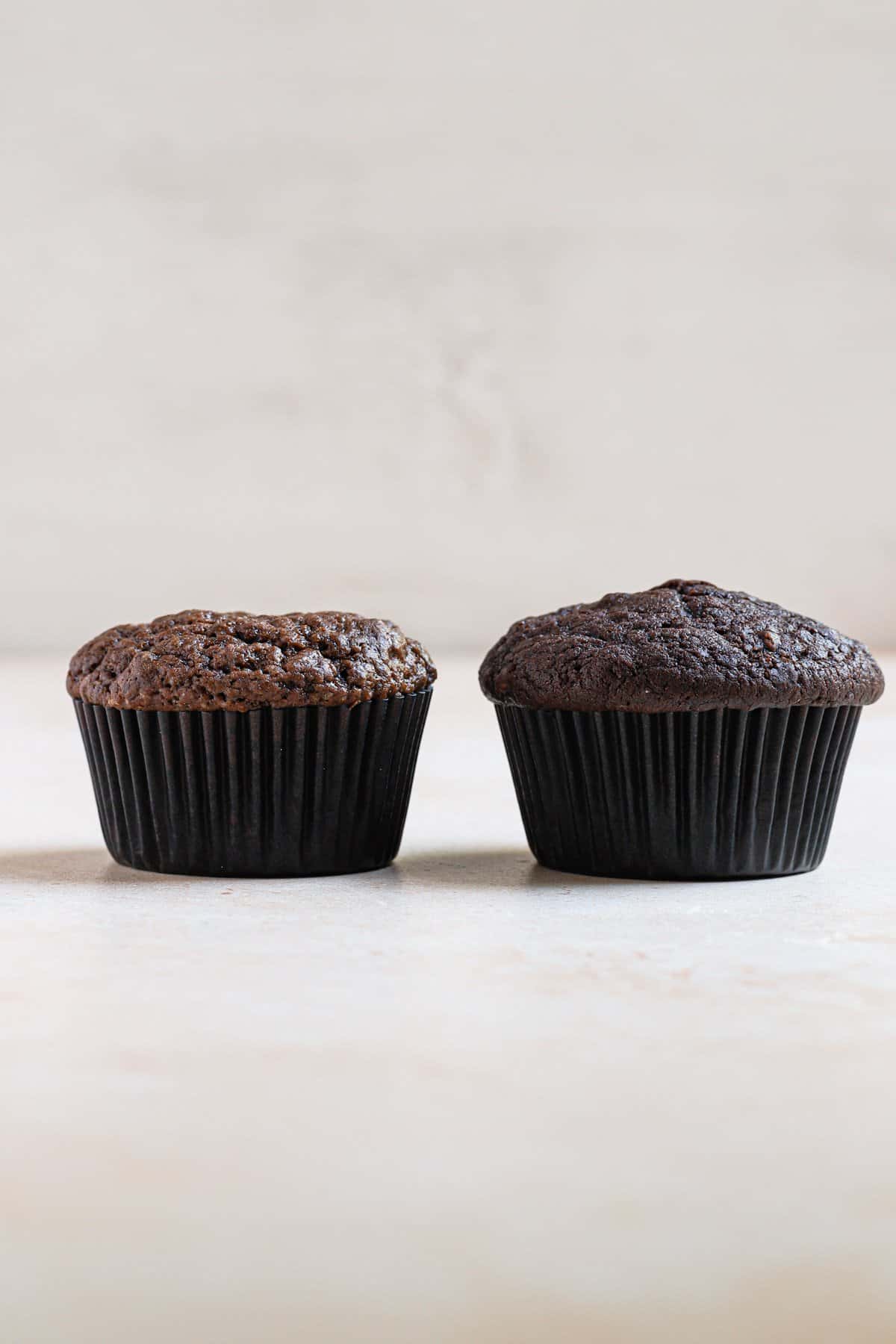Last updated on January 19th, 2024.
Chances are you came across the terms “Natural cocoa powder” and “Dutch-process cocoa powder”, more than once or twice while baking. Chances are, like me, you had no idea what the author meant and wondered if it’s a good idea to actually use the powder you have in your pantry.
Today I am explaining the difference and answering all your questions about this subject, the good news is that it is much simpler than you think.

Cacao VS. Cocoa
Unroasted and/or unsweetened beans (or products) are named Cacao, and roasted beans (and products) are referred to as Cacao.
What Is Cocoa Powder?
Let’s start with stating the obvious: both natural and Dutch processed are cocoa powder and you can replace one with the other with just a few minor changes in the recipe if at all.
The process of making chocolate begins with the fermentation of the cacao beans, followed by the roasting process. Next, the beans are pressed/squeezed in between large stone slabs, as a result, the cocoa beans expel chocolate liquor (melted unsweetened chocolate). The remains are being disregarded.
There are few ways manufacturers use the liquor
- Make chocolate products. Chocolate products such as semi-sweet, dark, and milk chocolate are sweetened. Cacao products, such as cocoa nibs, chocolate liquor (also known as unsweetened chocolate), cocoa powder, and cocoa butter are unsweetened.
- Separate the cocoa butter and solids that are in the cocoa liquor and end up with two separated products: natural cocoa powder and cocoa butter. Then, different types of cocoa powder such as Dutch processed cocoa powder and black cocoa are made using the natural unsweetened cocoa powder we already have. (not affiliated links)

What Is Dutch Process Cocoa Powder?
The process is called “Dutching” after its inventor, Conrad Van Houete, a dutch chocolatier. He discovered a way of increasing the PH level of the powder from 5 to 7 or 8. The PH level will reduce the number of different molecules (including astringent, which are bitter phenolics). As a result, the molecules have enough space to bond with each other. The new bond creates a dark color powder with a milder, smoother a more rich chocolate flavor. Dutch coco powder varies in color and from light brown to dark brown and sometimes even black. The darker the color the milder the flavor.
Dutch Cocoa Powder VS Natural Process Cocoa When Baking
As a rule, you can use both natural cocoa powder and Dutch process coco powder for any type of baked goods. But the difference in the acidity will affect the texture, flavor, and color of our baked goods:
- Texture. Acid disturbs gluten formation and speeds the setting process and baking time. Using natural cocoa powder means that our chocolate cakes and other baked goods are more tender and need less time to bake. However, using Dutch process cocoa powder will provide slightly denser and richer baked goods.
- Flavor. We’ve already established that the darker the color the milder and smoother the flavor. However, the acidity found in the natural cocoa powder will balance any sweetness. For example, if you are baking ice cream and would like to increase the sugar amount for a creamier texture, natural cocoa powder’s acidity will balance the sweetness.
- Color. The higher the PH level the darker the color, this is true for other aspects of baking as well.
Let’s take a closer look at these Double Chocolate Muffins to demonstrate the differences

- Color. The most obvious difference. The lighter one uses natural cocoa and the darker one uses Dutch-process cocoa.
- Texture. Both cupcakes are tender and moist, however, the darker one needed an extra 2 minutes in the oven. You can clearly see how it spread ever so slightly over the muffin liner. The lighter muffin set faster and managed to stay within the liner’s edges.
- Flavor. Even though dutch cocoa powder provides a milder flavor, in this recipe the chocolate flavor is more enhanced simply because the acidity in the natural cocoa powder balances the sweetness in the muffin and as a result, the flavor is more balanced and less enhanced.
These are all the reasons why I chose to use Dutch cocoa in this Biscoff Brownies recipe. And now you can decide on your own which type to use when you bake this Chocolate Sour Cream Cake, this Chocolate Orange Cake, these Chocolate Drop Cookies, or this Brownie Cake. (And also this brownie Pizza).
Substituting the powders
The thing to look for is whether the recipe uses baking soda or baking powder. Because natural cocoa powder is an acidic ingredient, when mixed with baking soda (sodium carbonate an alkaline solution) the chemical reaction will turn it into a leavening agent. so here are the rules when using dutch process cocoa vs natural cocoa:
- If the recipe does not call for any leavening agent, or just baking powder, replace the two with no issues.
- If the recipe calls for baking soda and uses natural cocoa, either use double the amount of baking powder instead of baking soda. Or replace the acidity with a different acid. For example, if the recipe calls for milk, use buttermilk or coffee instead.
- If the recipe calls for baking soda and uses dutch cocoa, and there is a different acidic ingredient that will activate the baking soda, no need to do anything. If there is no other ingredient that activates the baking soda then know it is there to activate other chemical reactions and you need to add 1/8 tsp of baking soda for every 3 tablespoons of natural cocoa powder. Also, note that you will change the texture of the recipe to the natural cocoa powder with release gas and leaven the baked good.
What if the recipe does not specify?
Then the world is your oyster and you can use either one. Make sure to carefully read the difference when it comes to texture, color, and flavor. In this S’mores Pies recipe, you can choose your own type.
How to know if the cocoa powder is “Dutched”?
Look at the ingredients list, if it reads: cocoa processed with alkali, it might be called alkalized and dutch.
Other types of powders
You might come across other types of dutch cocoa powders, here are the most common ones:
- Black cocoa is highly popular for baking these days. It gets its black color by repeating the dutching process more than once. Oreo cookies are famous for their dark color given by the black powder.
- Triple Cocoa Blend (not affiliated link). A combination of natural, dutch, and black powders.
Where to buy it?
More American grocery stores carry both types of powder, also specialty stores. It is also very common to buy online, like Scharffen Berger brand.
How To Store?
In a tight container or a bag. In a dark, cool spot in your pantry.
FAQ’s
Yes. It is the best way to incorporate chocolate flavor into our baked goods.
Natural cocoa is acidic, dutch cocoa is alkaline.
Hershey’s cocoa is natural (acidic), special dark is dutch (alkaline)
It is alkalized cocoa powder
Same as dutch processed.
No, the premium refers to the percentage of fat in the powder. Usually, it is 20-22.
More Chocolate Informative Articles
What Is Tempered Chocolate, How To Temper Chocolate, What Is Dark Chocolate? , What Is Ganache? What Is White Chocolate Ganache?
Did You Find This Useful?
If you tried this recipe or any other recipe by One sarcastic Baker baking blog, please take a movement to rate and comment at the end of each recipe. Your questions, ideas, and thoughts are priceless, and here at OSB we value them more than butter!
And don’t forget to tag me on Instagram

